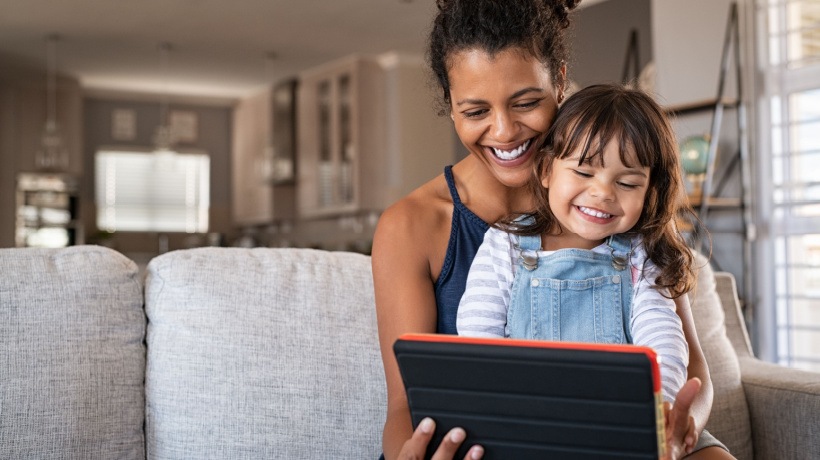Active eLearning For US Classrooms
As digital classrooms become more common in the US education system, teachers must refine eLearning experiences to serve student populations better. Learning how to prompt active screen time can create better eLearning opportunities. Identify the differences between active and passive eLearning to develop solutions, hone your digital classroom strategies, and craft truly engaging experiences that move beyond the click.
Differences Between Active And Passive eLearning Screen Time
While your digital learning modules might match your traditional lesson plans, they may not meaningfully engage students. Their level of interaction, cognitive engagement, and ongoing learning outcomes determine whether an eLearning setting is successful. Understanding the difference between active and passive screen time is the first step to increasing your students' engagement.
- Active
Active online learning keeps students' attention and pushes them to think critically about what they see. Your educational games and quizzes maintain their focus. Researchers measure student engagement based on how involved or interested students appear [1] during lessons, so getting a high engagement score means your eLearning modules are captivating enough that students don't feel bored. - Passive
Passive learning can be helpful but may not be the best option in online settings. Students learn passively by listening to videos or watching their teacher talk. Young people can absorb information that way, but it might not be as helpful on a computer or tablet. They could miss crucial details if their minds wander or if they stop logging in for learning activities that don't feel educational.
It is important to note how passive screen time affects language development. Too much passive learning prevents students from practicing the communication skills they need in active settings. Relying on both educational formats is crucial for kids developing their primary languages.
How Early Learners Experience Both Kinds Of Engagement
Early grade school students encounter passive and active learning styles in all school settings. They're more active during educational games and passive while listening to their teacher read. eLearning environments present similar opportunities. Designers must focus on active engagement strategies to keep students interested while sitting in front of their screens for extended periods.
Education professionals and eLearning designers also need active engagement to maximize their students' screen time benefits. Experts recommend that kids under 12 only get 1 hour of screen time daily [2], which isn't a realistic limit for virtual students. However, you can make their extended screen time better for their brains by keeping them involved in digital activities.
eLearning Design Strategies To Increase Active Learning
Keep these popular eLearning design strategies in mind as you craft learning opportunities for young students. By prioritizing their active engagement, you'll help them maintain their focus on educational modules.
1. Interactive Games
Research shows that over 90% of kids older than 2 play video games. Early learners may get more excited about active learning opportunities that reflect their video game interests. Create educational games that award kids with badges, compare their scores on leaderboards, and involve other rewards that boost their in-game abilities. They'll race to win while absorbing the educational content required to pass end-of-year testing.
2. Simulations
Young students can also learn valuable information through simulations. Watching characters interact, choosing dialogue and answering questions makes kids focus on their lesson. Simulations might merge creative expression with immersive lessons if you craft them with active student participation in mind.
3. Collaborative Digital Projects
Peer collaboration engages a child's communication and social skills [3], which they might not otherwise refine through individual eLearning modules. Consider creating more opportunities for group projects or tasks to help kids hone those skills.
Students will talk with classmates, collaborate on ideas, and learn to delegate responsibilities if you make eLearning modules with projects built into the lesson structure. As you study how passive screen time affects language development, consider active team projects as a solution to interpersonal language skills falling behind.
4. Adaptive Quizzes
Anyone can answer quiz questions, get their grades a few days later, and identify incorrect answers. The time between taking the quiz and getting their grade back gives kids a chance to forget what they answered initially. Adaptive eLearning quizzes provide real-time feedback after each question. Students learn what they got wrong and have immediate opportunities to try again. Your lessons may be more beneficial for young learners if they incorporate mini-adaptive quizzes.
5. Diverse Digital Tools
Lessons that engage young people's creativity are helpful in any classroom setting. The creative arts enhance students' overall engagement [4] by connecting them with their cognitive, social, and emotional skills. eLearning designers can replicate those results with digital classroom opportunities like drawing toolboxes. If students sketch scenes or color pictures that align with their lesson objectives, they'll remain active learners and strengthen those skills.
6. Evolving Learning Paths
eLearning opportunities can grow with each student's academic needs. Advanced learners can receive personalized lessons in an adaptive digital classroom. You'll ensure better accessibility and inclusivity in grade schools by designing lessons that adapt to each young person's abilities. AI-powered lessons may become a valuable tool, making evolving learning paths a more commonplace part of any curriculum since AI learns in real time with students.
Parental Involvement In eLearning Activities
Although parents aren't typically present while kids attend school in person, they can be part of their child's eLearning experience. They reinforce their child's focus at home during virtual lessons and homework time. You can make them part of each student's screen time by adding discussion prompts for parents and co-play modules.
Parents can receive recurring progress reports if eLearning designers add parent-friendly resources like automatically generated progress emails. They'll feel part of their student's growth whether they have plenty of time to join their child's virtual lessons or minimal time to help with homework.
Understanding the importance of parental involvement and guidance in supporting active screen time is crucial. Parents may accidentally distract their kids during homework time or devalue virtual learning opportunities if they aren't part of the process. Simple program additions like progress reports or parent-focused activities solve that challenge.
Elevate US Classrooms With Active Screen Time Strategies
Once you discover the difference between passive and active screen time, creating engaging modules becomes simpler. Keep young people on their toes with interactive games, adaptive quizzes, and online group work. If their parents become part of their virtual instruction, your lessons will better support young learners in online and in-person classroom settings.
References:
[1] Impact of online learning on student's performance and engagement: a systematic review
[2] Tips to Reduce Screen Time for Children
[3] Improving young children's peer collaboration in early educational settings: A systematic review
[4] The Impact of Creative Arts on Student Engagement and Learning









